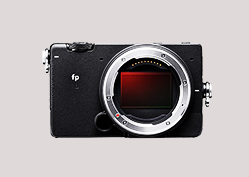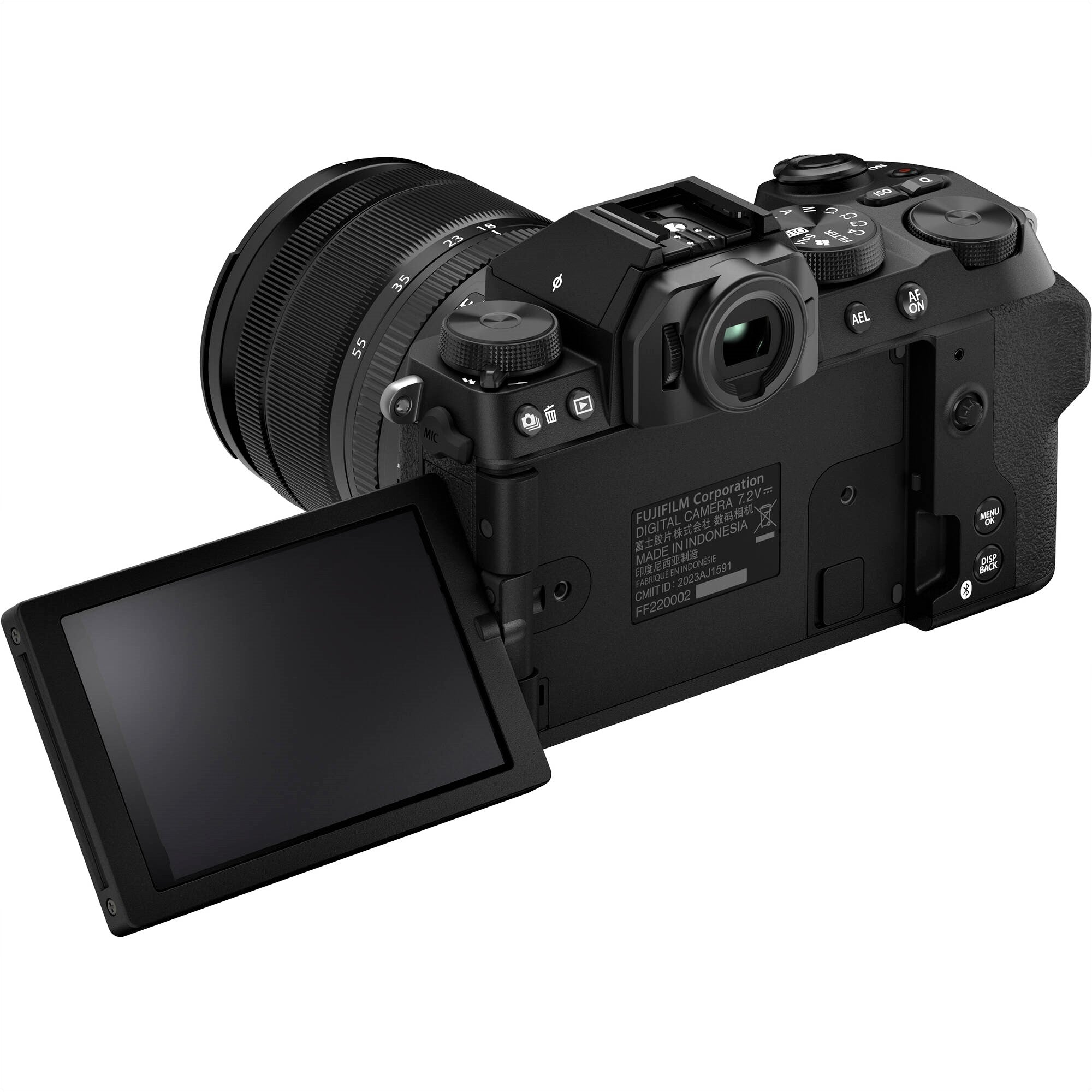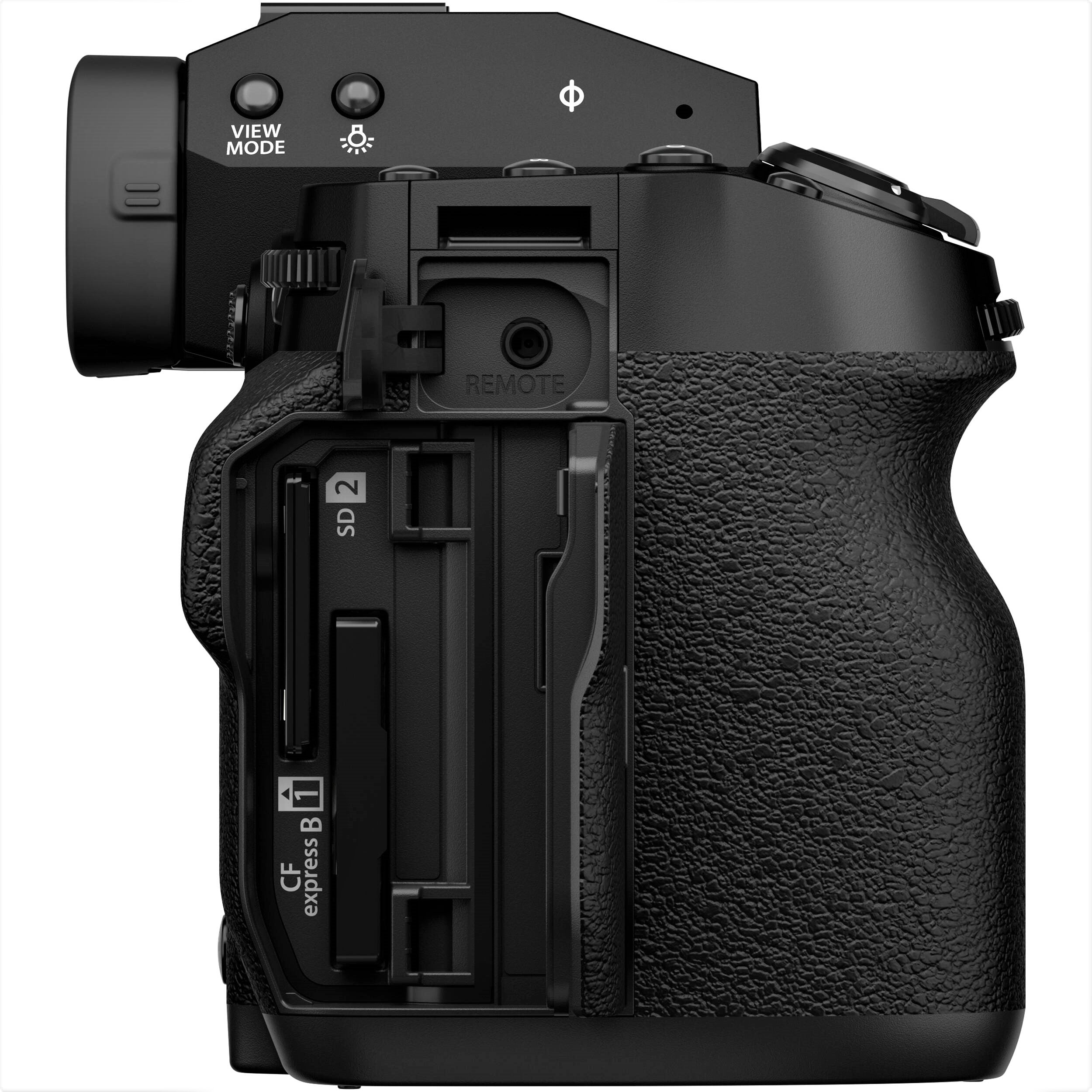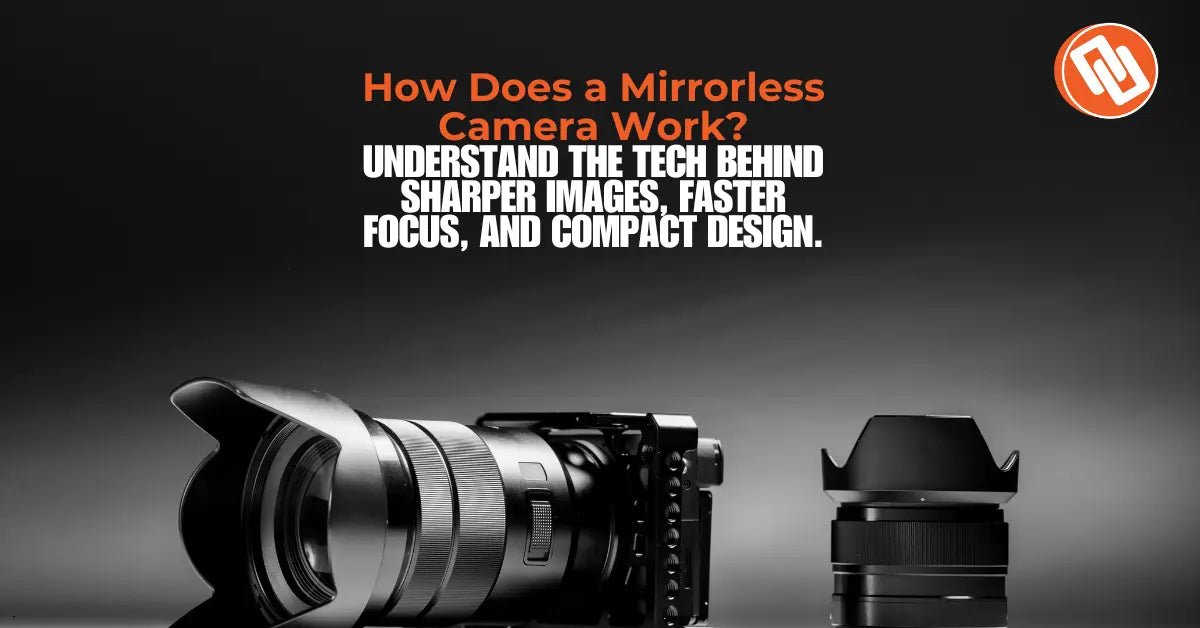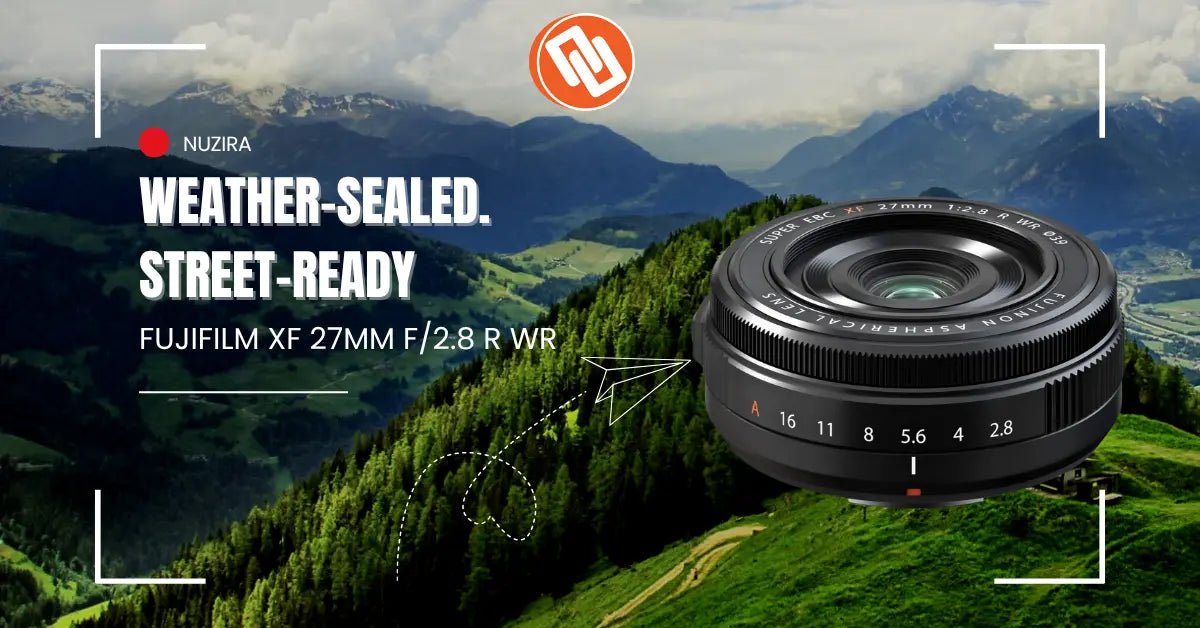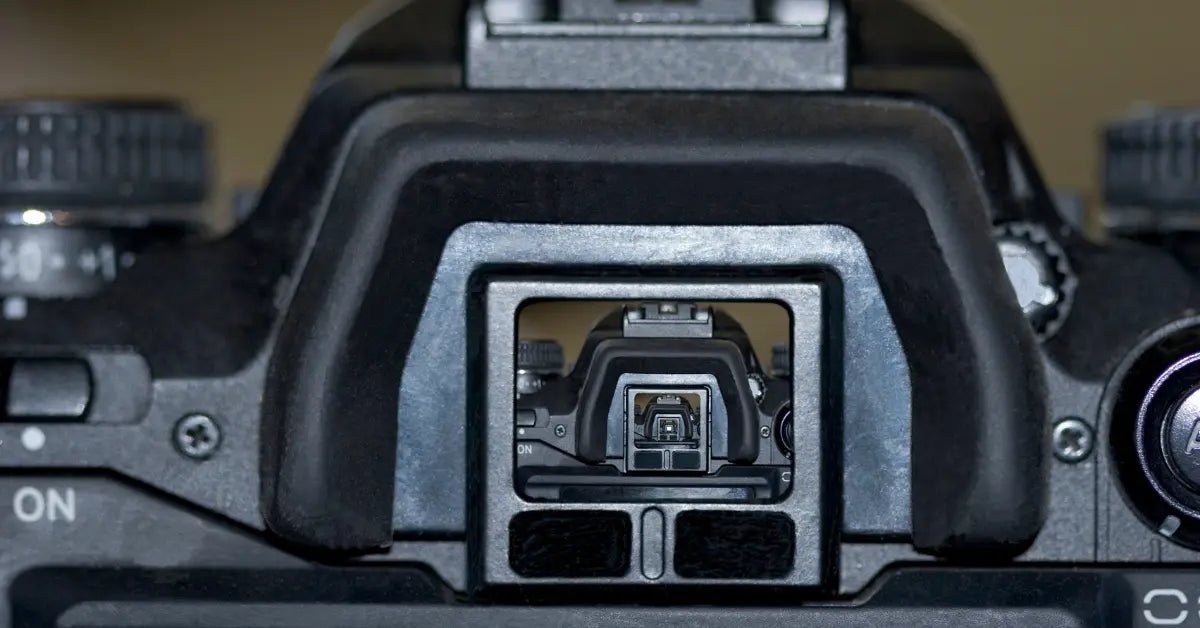In today’s fast-changing world of photography, one big question stands out for both new and experienced photographers: how does a mirrorless camera work?
Mirrorless cameras aren’t just another trend—they’re a major upgrade in how we take pictures. Unlike DSLRs, which use a bunch of mirrors and prisms to bounce light up into a viewfinder, mirrorless cameras skip all that. The light goes straight through the lens and hits the image sensor. Then, you see what the sensor sees on a screen or an electronic viewfinder. No mirrors. No flipping parts. Just a direct path. That makes these cameras smaller, lighter, and easier to carry—without losing image quality.
What’s really smart about mirrorless tech is how smooth and fast it works. Fewer parts mean fewer things moving around. That means less lag. It also means less noise. Want to shoot fast? You can. Want to be quiet and unnoticed? You can do that, too. This is perfect for street shots, travel photos, or catching animals in the wild. You also get to see exactly what the final photo will look like before you take it. If the lighting changes, you’ll know right away. No guessing. No wasting shots.
Autofocus is another area where mirrorless shines. These cameras use the sensor itself to focus. Some use phase detection. Others use contrast detection. Either way, it’s fast. And it’s smart. Moving subjects? No problem. Dim light? Still sharp. From portraits to sports, the focus just works.
There’s more. These cameras often come with features like image stabilization built right into the body (IBIS), subject tracking that locks on, and top-notch video tools. Some can even shoot in 4K—or 8K. Add to that a growing list of excellent lenses, and you’ve got a system that’s hard to beat. Whether you’re a pro or just really into photography, mirrorless gives you the freedom to create without limits.
So—what makes these sleek little machines so powerful? Let’s look closer and find out.
What Does a Mirrorless Camera Mean?
A mirrorless camera is a type of digital camera. It doesn’t use the mirror you find in regular DSLR cameras. That might sound small, but it actually changes a lot about how the camera works.
In a DSLR, light comes through the lens and hits a mirror. That mirror bounces the light up to the optical viewfinder, so you can see what the lens sees. When you press the shutter, the mirror flips up. Then the shutter opens and light hits the sensor to take the picture. This works well, but it involves moving parts. That makes DSLRs a bit bulky, noisy, and slower.
Mirrorless cameras skip all that. They don’t have the mirror or prism. Light goes right to the sensor all the time. The sensor sends a live view to the screen or the electronic viewfinder. What you see is what you get—real-time, with the correct exposure and effects.
You can even see things like:
-
Histograms
-
Focus peaking
-
Exposure warnings
These tools help a lot when composing shots.
Mirrorless cameras have some clear upsides:
-
They’re lighter
-
They’re smaller
-
They’re quieter
-
They’re faster
And even with all that, they still give you high-quality images. Many also include smart autofocus features like phase detection on the sensor and AI subject tracking. These tools are helpful for photos and videos alike.
If you’re trying to choose between a DSLR and a mirrorless camera, think about more than just size. Look at the lens options. Look at how long the system will be supported. Think about how you plan to use it.
Camera companies are now focusing more on mirrorless systems. That’s a strong hint that mirrorless is where things are headed.
Still unsure? Check out Are Mirrorless Cameras Better Compared to DSLRs? It gives a clear, side-by-side look at the key differences.
The Anatomy of a Mirrorless Camera
To understand how a mirrorless camera works, it helps to look at its main parts. These cameras are small but packed with powerful features. They're great for beginners and professionals alike.
Lens
The lens is how your camera sees. It takes in light and sends it to the sensor. Mirrorless cameras have a short space between the lens and the sensor. This makes the camera more compact. It also allows for creative lens designs.
-
You can use many types of lenses—prime or zoom.
-
Native lenses work great, and adapted ones often do too. Some systems, like Sony Alpha or Nikon Z, use wide lens mounts. This helps with sharpness, brightness, and edge clarity. You can shoot wide shots or tight portraits. It’s flexible. Fast lenses? No problem. You can get creative.
Image Sensor
This is the camera’s core. It takes the light and turns it into digital info.
-
No mirror inside. That’s the big difference from DSLRs.
-
Light goes straight to the sensor. That makes the camera simpler and faster. You get better performance. Modern sensors—like the ones in the Sony A7R V or Canon EOS R5—are impressive. They capture more light. They handle noise well. Colors look true. And since there’s no mirror? You get live previews. Real-time focus. It’s great for action shots—sports, wildlife, events. Always ready.
Electronic Viewfinder (EVF) or LCD Screen
Mirrorless cameras don’t use optical viewfinders. Instead, they show you a screen. What you see is what you’ll get.
-
Exposure? Check.
-
White balance? Yup.
-
Filters, depth, color? All visible live. Top cameras like the Panasonic S5II or Fujifilm X-T5 have amazing EVFs. Fast refresh. Clear display. Almost no delay. Even in tough light, you can see well. Some have flip-out LCDs too. That helps with low shots, high shots, or filming yourself. Super handy.
The Core Difference: The Absence of a Mirror
Mirrorless cameras are different from DSLRs in one big way: they don’t have a mirror inside. In DSLRs, light goes through the lens, bounces off a mirror, and gets sent to a special glass piece called a pentaprism. That’s how you see through the viewfinder. But when you press the shutter button, the mirror flips up so the light can reach the sensor and take the photo.
Mirrorless cameras skip all that. Light just goes straight through the lens and hits the sensor. What the sensor sees is shown on a screen or in an electronic viewfinder. This design makes the camera work in a new, more modern way—and it comes with some big benefits.
Key Advantages of Mirrorless Camera Design:
-
Faster Photo Bursts: No mirror means fewer moving parts. That lets mirrorless cameras shoot photos very quickly, one after another. Perfect for sports or anything fast.
-
Less Shake: Without a mirror moving around inside, there’s less vibration. That means sharper photos—especially when you’re using slow shutter speeds or long lenses.
-
Quiet Shooting: Mirrorless cameras don’t make as much noise. They're great for weddings, performances, or taking photos of animals that might get scared.
-
Smaller and Lighter: Without the mirror, the camera doesn’t need to be as bulky. You get a smaller body that’s easier to carry, but the image quality stays high.
-
See the Shot Before You Take It: The sensor shows you a live preview. You can check brightness, color, blur—everything—before you click.
-
Better Autofocus: The focus system works right on the sensor. That makes it faster and more accurate, especially for videos or when tracking eyes and faces.
Mirrorless cameras aren’t just a passing trend. They’re the future. They take out old moving parts, speed things up, and make cameras easier to carry and use. That’s why more people are switching.
Want to dive deeper into the differences? Check out The Difference Between Mirrorless and DSLR Cameras to see how each type stacks up, and which one might work best for you.
Real-Time Preview and Exposure Control
Real-time preview is one of the biggest improvements in mirrorless cameras today. These cameras show you exactly what your final image will look like—before you take the shot. Unlike DSLRs that use optical viewfinders and need a test photo to check exposure, mirrorless models use an electronic viewfinder (EVF) or the back screen. That live feed comes straight from the sensor.
You don’t have to guess. You can see how changes to settings like ISO, shutter speed, or white balance will change your image—right away. This makes the whole process feel easier and more natural.
Here’s what you get:
-
Fewer mistakes from bad exposure or white balance
-
More creative control when composing your shot
-
A faster, smoother learning curve—especially if you're just starting out
Let’s say you're shooting at golden hour. Or maybe it’s dark, like at a concert. Or high contrast, like bright sun on the street. You don’t need to wonder what your picture will look like. You can already see it.
Some cameras, like the FUJIFILM X-T50 Mirrorless, go even further. They offer Film Simulation modes. Want a vintage vibe? Or a crisp, clean look? You can try out different film styles right there—no editing needed later.
This isn’t just a helpful feature. It changes the whole experience. It helps you shoot with more purpose. You waste less time. And your photos? More polished. More intentional. Every time.
Autofocus Speed and Accuracy
Autofocus on mirrorless cameras is fast and sharp. That’s one of their biggest strengths. Unlike old-school DSLRs that use a separate autofocus part, mirrorless cameras skip that. DSLRs can have focus problems—especially in bad lighting or when a subject moves unpredictably.
Mirrorless models focus right on the sensor. No extra parts. That means less trouble and more accuracy. They use contrast detection, phase detection, or both. This combo helps them focus quickly, even in tricky situations. Low light? No problem. Busy scene? Still fast.
They’re great at tracking, too. Real-time subject tracking and continuous autofocus work smoothly. DSLRs struggle to keep up. Mirrorless cameras, on the other hand, follow the action. They adapt while recording. This matters a lot to people shooting video or action shots.
Here’s a good example: the Fujifilm X-M5. It’s a mirrorless camera with smart autofocus. The AI inside knows what it's looking at. People, animals, cars—it sees them all. And it follows them without losing track. That’s huge for sports or wildlife shots.
Every moment matters in fast photography. The X-M5 catches them. Sharp, focused frames. Less guessing. Fewer missed shots. It’s not just helpful—it changes the game.
Video Capabilities: A Cinematic Advantage
Mirrorless cameras have changed how people shoot video. They’ve quickly become the go-to choice for filmmakers, YouTubers, and anyone making content. Why? Because they’re packed with smart tech, they’re fast, and they’re easy to carry.
They don’t have a mirror inside like older DSLRs, and that makes a big difference. With bigger sensors and faster data processing, these cameras deliver top-notch video. DSLRs often fall short—slow autofocus, fewer video tools. Mirrorless cameras are built for video from the ground up.
Why do they lead the pack?
-
Fast autofocus tracking: Keeps up with moving subjects. Smooth and smart. No hunting.
-
Eye and face detection: Focus stays locked—perfect for interviews and solo filming.
-
Super high resolution: 4K, 6K, even 8K in some models. Great for details and editing flexibility.
-
Slow motion support: 120fps or more. You get that smooth, dreamy look.
-
Built-in stabilization (IBIS): No shaky footage. Shoot handheld. Less gear needed.
Take the Fujifilm X-S20. It’s a great example. Shoots 6.2K video, oversampled to clean 4K at 30fps. Has solid stabilization. F-Log2 support helps with dynamic range. Plus, it can stream straight over USB. Lightweight but powerful. You can use it in a studio or on the move—doesn’t matter. It’s built for flexibility.
Why do filmmakers love mirrorless?
It’s not just the specs. It’s about control and ease of use. These cameras let you use all kinds of lenses—both native and third-party. You can plug in mics, monitors, audio gear. Perfect for serious video work.
The electronic viewfinder (EVF) and flip-out screen help too. You can check exposure, focus, white balance, and even apply LUTs while you shoot. That saves time. Less guessing. More doing.
They’re also quiet. Fewer moving parts. Even a silent shutter mode. Great for sensitive shoots—like weddings or documentaries. And they’re small. Easier to carry. Less gear to lug around.
In the end, mirrorless cameras do more than capture footage. They give creators the tools to work faster, smarter, and with more freedom.
Battery Life: A Common Trade-Off
Mirrorless cameras changed photography. They're small, quiet, and fast. But battery life? That’s been a bit of a problem. Unlike DSLRs, they use more power. Why? Things like electronic viewfinders, big screens, and strong processors—all of them drain energy fast.
Still, that gap is closing. Today’s mirrorless cameras are better than ever. You’ll find:
-
Bigger batteries that last much longer
-
Smarter power controls that use less energy
-
USB-C ports so you can charge anywhere—power banks, laptops, even your car
Take the Fujifilm X-T30 II. It’s a solid example. It saves battery while still giving top-quality images. Fast. Sharp. Reliable. Whether you’re just getting into photography or you’re a pro, it holds up.
Want your battery to last even longer? Try this:
-
Turn down the screen brightness if you’re outdoors
-
Only use autofocus when you need it
-
Turn off stabilization when your camera’s on a tripod
-
Keep firmware up to date—sometimes updates make a real difference
And yes, always bring a spare battery. Especially for big events, nature trips, or long travel days. But the truth is, battery issues aren’t what they used to be. New cameras last longer, and charging options are better than ever.
So is battery life still a downside? A little, maybe. But it’s minor now. With smart habits, it won’t slow you down.
Silent Shooting and Stealth Mode
Silent shooting is a big deal. Mirrorless cameras can shoot with no sound at all. They do this using electronic shutters. No clicks. No mechanical noise. Just silence.
This is huge in quiet places. Think about weddings. The groom wipes a tear. You click—except you don’t. The camera’s silent. Or maybe you're in the wild. A deer turns its head. You snap a photo without scaring it. Even on film sets, where the tiniest sound can mess up a scene, these cameras stay quiet.
DSLRs have mirrors that flip. That flip makes noise. Mirrorless cameras don’t have that. No mirror means no sound. You press the button. It captures the moment—quietly. That’s not just nice. It’s powerful.
Why does it matter? Because moments are fragile. One sound can ruin everything. But when you’re silent, you blend in. People don’t notice you. Animals don’t run. You catch real emotions. Real expressions. Real life.
For weddings? Perfect. For wildlife? Essential. Street photography? Documentary work? You need silence. Not to hide. But to respect. The silence protects the scene. It keeps things honest.
And for journalists? Silence helps them tell the truth. No one acts different because of the camera. The moment stays real. That’s not just better—it’s right.
In the end, silent shooting isn’t just quiet. It’s smart. It’s respectful. It’s how you get the shot that matters.
Size, Weight, and Portability
Mirrorless cameras are easy to carry. That’s one of their biggest strengths. They don’t have the mirror box and optical parts that DSLRs do. Because of this, they’re smaller and lighter. But even though they’re lighter, they still take great photos and videos. You don’t lose quality. You just lose weight and bulk. And that’s a good trade.
This smaller size matters a lot to people who need to move quickly or travel often:
-
If you’re a travel photographer, you’ll like that your gear is lighter but still sharp, colorful, and fully manual if you need it.
-
If you shoot street scenes, a smaller camera helps you stay invisible. You blend in. You don’t scare off the moment.
-
If you’re hiking or exploring, you won’t feel like your camera is dragging you down. It won’t slow you.
-
If you’re a vlogger, your camera fits in your bag. Your back doesn’t hurt. You don’t need five accessories just to shoot.
Think about the Fujifilm X-T50. It’s small, sleek, and smart. Retro style meets modern tech. It has a powerful sensor, fast focus, and even 4K video. And it’s small enough to fit in your coat pocket. Whether you’re a pro or just love taking photos, this camera helps you move fast, stay quiet, and pack light. It’s more than handy—it gives you an edge.
Mirrorless cameras let you focus on the moment, not the gear. Every inch, every ounce—it all adds up. When space and speed matter, going mirrorless isn’t just nice. It’s the smart move.
Lens Options and System Compatibility
A common myth still lingers: mirrorless cameras don’t have many lens options. That might’ve been true in the early days—but not anymore. The gap has closed. In fact, mirrorless systems have leapt ahead in many ways. They now offer more choices, new tech, and better adaptability than most DSLR setups.
Mirrorless cameras today can use all sorts of lenses. The range is wide:
-
Mount Adapters for DSLR Lenses: You don’t have to ditch your old DSLR glass. Mount adapters let you keep them. Canon, Nikon, Sony—they all offer official adapters. Autofocus still works. Aperture control? Still there. The shift from DSLR to mirrorless feels smooth, not disruptive.
-
Wide-Angle Primes and Telephoto Zooms: From ultra-wide shots to distant zooms, mirrorless has it all now. You’ll find native lenses that suit landscapes, portraits, sports—anything. Autofocus tends to be fast and quiet. Plus, mirrorless lenses are often lighter and smaller. That’s thanks to the shorter distance between lens and sensor.
-
Cinema Lenses for Professional Filmmaking: Big productions are using mirrorless too. High-end mirrorless cameras now work with cinema-grade lenses. These lenses offer smooth, manual control, de-clicked apertures, and tough, pro-level construction. They're made for real filmmaking.
-
Vintage Manual Lenses for Artistic Expression: Want something unique? Go old-school. You can mount vintage lenses—Zeiss, Pentax, Minolta, and more. These lenses often have a special look. Soft flares. Gentle focus falloff. A vibe that’s hard to replicate with modern glass.
Lens makers like Fujifilm, Sony, Panasonic, and Sigma now build lenses just for mirrorless. These lenses don’t just work—they communicate. Autofocus, image stabilization, aperture data—it’s all integrated. Sigma’s BF Mirrorless Camera, for example, supports both L-Mount and other advanced lenses. You get flexibility for both photos and video.
And that’s the magic of mirrorless. It’s not only about fitting lenses—it’s about freedom. You’re not locked into one system. You can mix, match, adapt, and build the exact kit you need. Whether you're chasing creative shots or working under pressure, mirrorless gives you more tools to get it done.
So here’s the new truth: mirrorless means options. More than ever. More ways to work. More ways to create.
Real-World Use Cases: Why Mirrorless Wins
To really see why mirrorless cameras stand out, it's best to look at how they perform in the real world. Whether you're just passionate about photography or it's your profession, these examples show how mirrorless cameras bring serious value across different situations:
-
Low-Light Performance: Mirrorless cameras do great in dim light. There’s no mirror inside, so light hits the sensor directly. That’s a big deal—it means more light gets in, which helps a lot in dark settings. Fast lenses make it even better. You also get a live preview through the EVF or screen, so you can tweak settings like ISO or shutter speed right away. No more guessing. That real-time control cuts down on mistakes like blown-out highlights or dark shadows. It’s perfect for concerts, night shots, or starry skies.
-
Action and Sports: Fast action needs fast gear. Mirrorless cameras nail this with super quick autofocus—thanks to phase-detection sensors right on the chip. Tracking fast-moving subjects? No problem. Some shoot at 20 frames per second or more. That’s faster than most DSLRs. Plus, features like eye or animal tracking make it easier to stay locked in. And the silent shutter? It’s gold when you need to shoot quietly—think indoor sports or golf.
-
Street and Travel Photography: Travel light. Stay quick. Be discreet. That’s where mirrorless cameras shine. They’re smaller, lighter, and easy to carry all day. Some even fit in a big jacket pocket. The silent shutter lets you shoot without drawing attention—great for candid moments. Image stabilization and live histograms help you adjust on the fly. Whether it’s a buzzing city or a peaceful town, mirrorless makes it easier to catch the moment fast—and with less fuss.
-
Studio Work: In the studio, every detail matters. Mirrorless cameras make it easier to get things just right. You see exposure changes in real time. Focus peaking helps you dial in sharpness. Zoom in to fine-tune before you even hit the shutter. Plus, tethering to editing tools like Lightroom is seamless—clients can see shots as you take them. And the image quality? Strong colors, wide dynamic range, great skin tones. Perfect for fashion, portraits, and commercial jobs. You get full control—and it shows in the results.
The Future of Photography Is Mirrorless
Mirrorless cameras are changing photography. They’re small, fast, and flexible. That’s why more pros, creators, and photo lovers are choosing them.
DSLRs use mirrors. Mirrorless cameras don’t. That means less noise. Less weight. More speed. But it’s not just the hardware. It’s the tech inside that makes them powerful. New models use AI to lock focus fast. They track eyes, faces, even moving subjects. Low light? No problem. Shaky hands? In-body image stabilization fixes that. These tools aren’t rare anymore—they’re expected.
Companies like Fujifilm and Sigma lead this change. They’re improving sensors. Making more lenses. Pushing digital tools further. The Fujifilm X-M5? Sharp images. Bold colors. Small enough to carry anywhere. The X-T5? Retro feel, modern guts. It shoots 6.2K video. Has five-axis stabilization. The dials? You can set them just how you like. It’s made for serious work.
But the best part? These cameras do it all. You can shoot landscapes. Film pro-level video. Stream live content. One camera. Many uses. They're not just for one job. They're for every kind of creator.
Looking forward, it’s clear. Mirrorless is the future. But not just because it’s mirrorless. It’s faster. Smarter. More creative. And it’s only getting better.
Summary: Key Takeaways on How Mirrorless Cameras Work
Let’s recap the essential points about how mirrorless cameras function and why they matter:
-
No Mirror Mechanism: Mirrorless cameras eliminate the mirror found in DSLRs, allowing light to reach the sensor directly. This results in a simpler, lighter, and quieter design.
-
Real-Time Digital Preview: These cameras use electronic viewfinders or LCD screens to show a live feed from the sensor, letting users see the exact exposure, color, and depth of field before taking a photo.
-
Fast and Accurate Autofocus: On-sensor autofocus systems enhance subject tracking, even in challenging lighting or high-speed scenarios.
-
Advanced Video Capabilities: Mirrorless cameras deliver superior video features like continuous AF, 4K recording, and in-body stabilization, making them ideal for content creators.
-
Portability: The compact size of mirrorless cameras makes them perfect for travel, street, and handheld photography without compromising quality.
-
Lens Versatility: Modern systems support both native and adapted lenses, expanding creative possibilities.
Whether you’re shooting portraits, action shots, cinematic video, or low-light scenes, mirrorless cameras offer unmatched versatility and precision.
If you’ve ever wondered, what does a mirrorless camera mean for me as a photographer?, the answer lies in its blend of convenience, innovation, and performance. Mirrorless technology doesn’t just replace the mirror—it replaces limitations.
By eliminating the old mirror mechanism, you gain access to faster shooting, real-time previews, higher accuracy, and a more compact gear setup. Whether you're upgrading from a smartphone, moving on from a DSLR, or stepping into photography for the first time, a mirrorless camera provides a powerful platform to grow your skills.
Ready to explore the best mirrorless cameras for your needs? From the versatile Fujifilm X-T30 II to the video-ready Fujifilm X-S20, there’s a perfect model waiting to bring your creative vision to life.
If you're serious about elevating your photography or videography game, there's no better time to invest in a mirrorless camera. At Nuzira, we offer a handpicked selection of top-rated models, expert guides, and real-world reviews to help you make the right choice.
Explore our curated collection of mirrorless cameras, dive deeper with our guides, and gear up with confidence.
Visit Nuzira.com today to find the perfect mirrorless companion for your creative journey.

